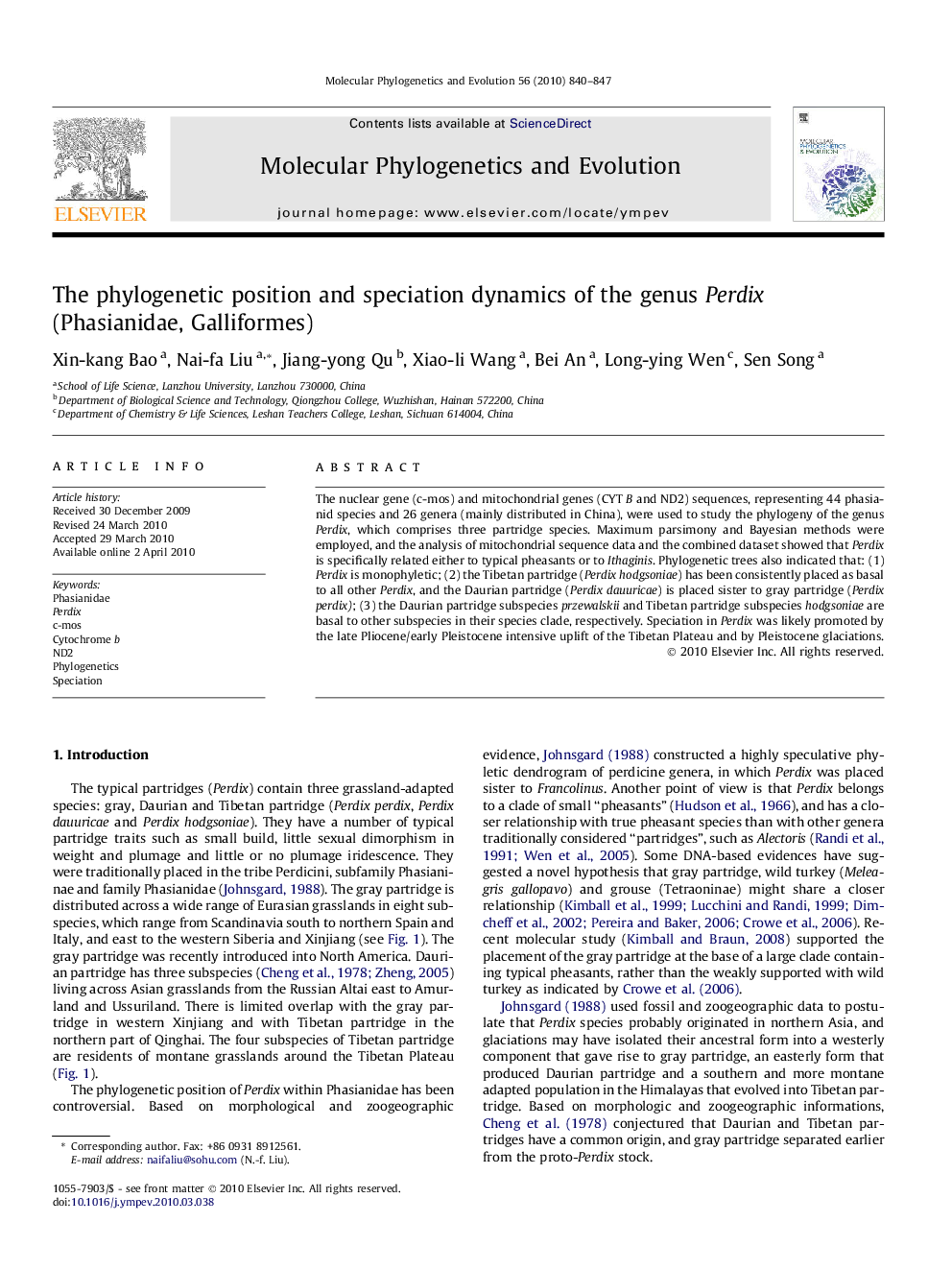| Article ID | Journal | Published Year | Pages | File Type |
|---|---|---|---|---|
| 2834530 | Molecular Phylogenetics and Evolution | 2010 | 8 Pages |
The nuclear gene (c-mos) and mitochondrial genes (CYT B and ND2) sequences, representing 44 phasianid species and 26 genera (mainly distributed in China), were used to study the phylogeny of the genus Perdix, which comprises three partridge species. Maximum parsimony and Bayesian methods were employed, and the analysis of mitochondrial sequence data and the combined dataset showed that Perdix is specifically related either to typical pheasants or to Ithaginis. Phylogenetic trees also indicated that: (1) Perdix is monophyletic; (2) the Tibetan partridge (Perdix hodgsoniae) has been consistently placed as basal to all other Perdix, and the Daurian partridge (Perdix dauuricae) is placed sister to gray partridge (Perdix perdix); (3) the Daurian partridge subspecies przewalskii and Tibetan partridge subspecies hodgsoniae are basal to other subspecies in their species clade, respectively. Speciation in Perdix was likely promoted by the late Pliocene/early Pleistocene intensive uplift of the Tibetan Plateau and by Pleistocene glaciations.
